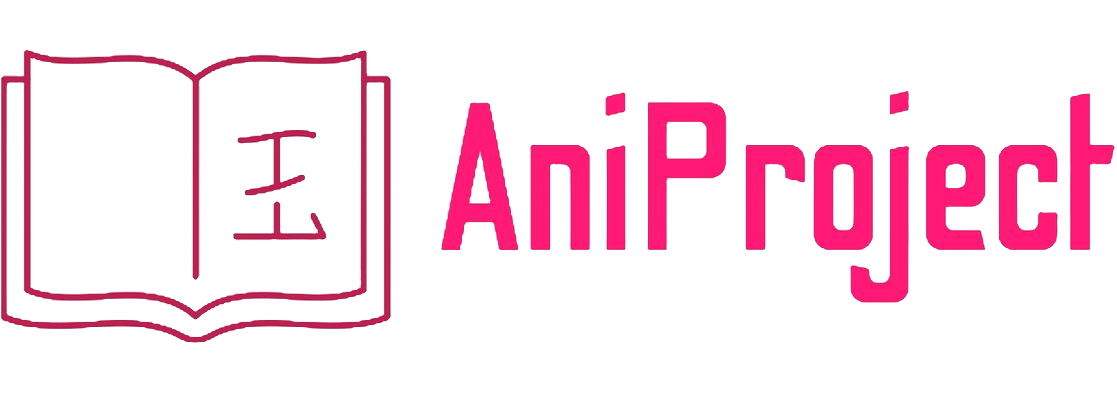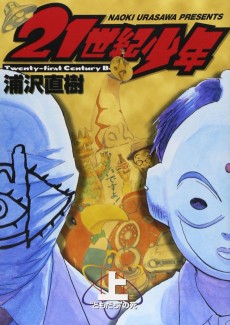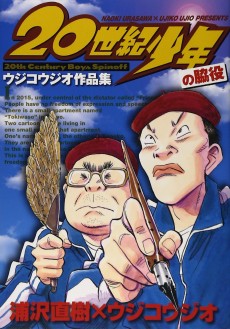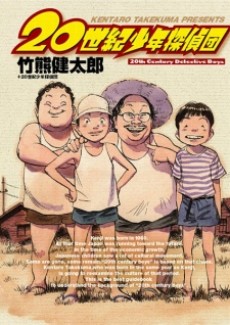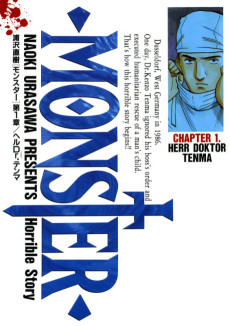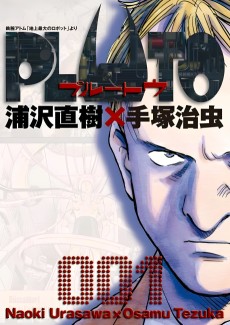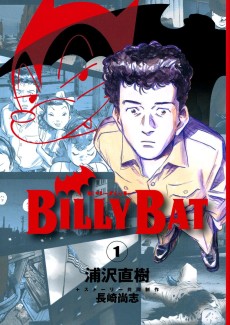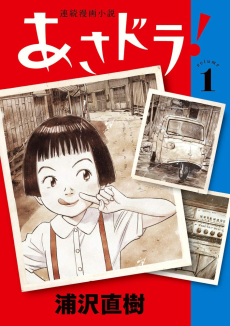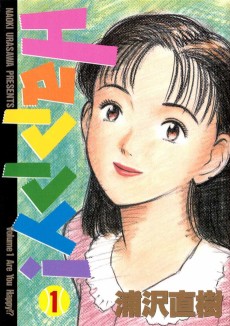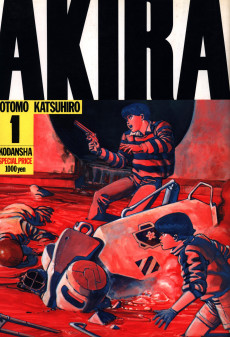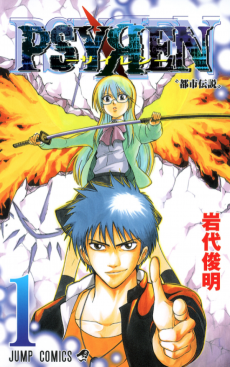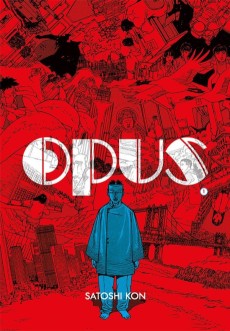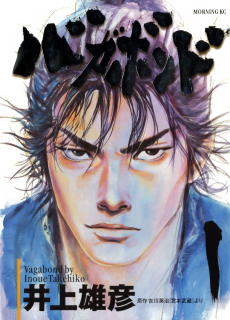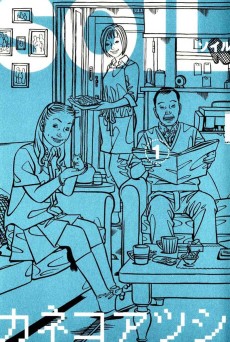20 SEIKI SHOUNEN
STATUS
COMPLETE
VOLUMES
22
RELEASE
April 24, 2006
CHAPTERS
249
DESCRIPTION
Humanity, having faced extinction at the end of the 20th century, would not have entered the new millennium if it weren't for them. In 1969, during their youth, they created a symbol. In 1997, as the coming disaster slowly starts to unfold, that symbol returns. This is the story of a group of boys who try to save the world.
For Kenji, a simple convenience store manager who once dreamed of becoming a rock 'n' roll musician, a host of memories from his past come rushing back when one of his childhood friends mysteriously commits suicide. Could this new death be related to the rise of a bizarre new cult that's been implicated in several other murders and disappearances? Determined to dig deeper, Kenji reunites with some of his old buddies in the hope of learning the truth behind it all.
(Source: Viz Media)
CAST
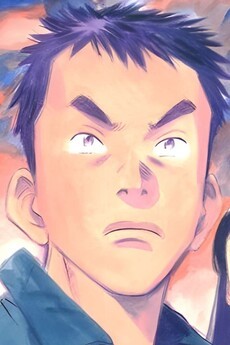
Kenji Endou

Tomodachi
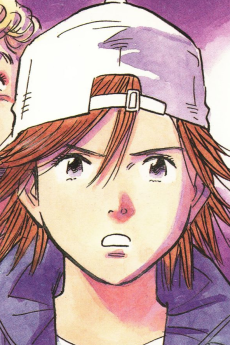
Kanna Endou
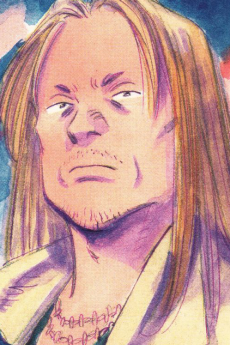
Chouji Ochiai
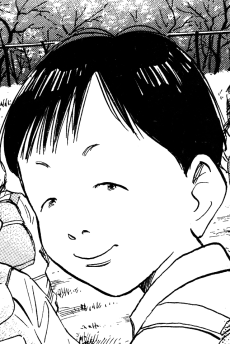
Sada Kiyoshi
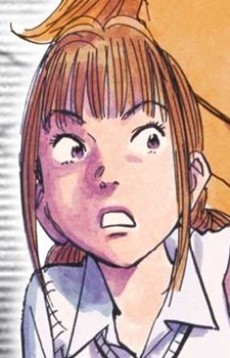
Kyoko Koizumi
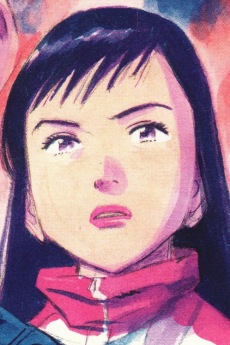
Yukiji Setoguchi

Yoshitsune Minamoto
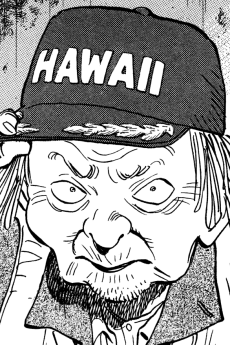
Kyuutarou Kaminaga
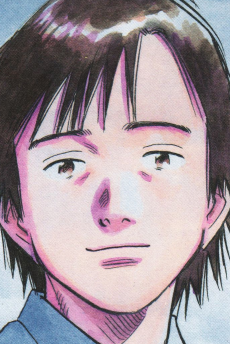
Shouhei Chouno
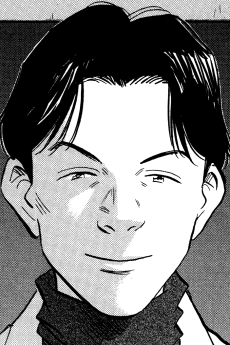
Fukubei Hattori
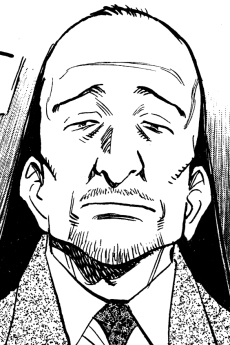
Manjoume Inshuu
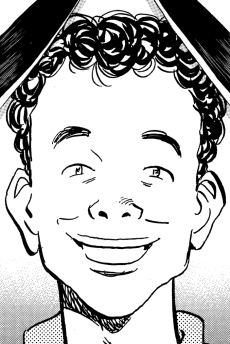
Saburô Kido
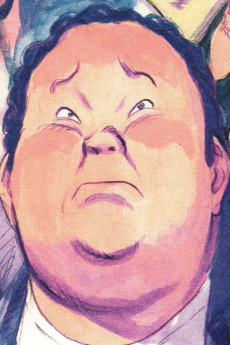
Maruo
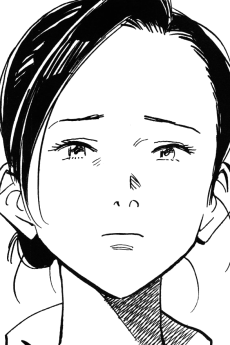
Kiriko Endou
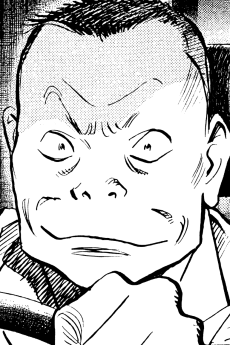
Keitarou Fukuda
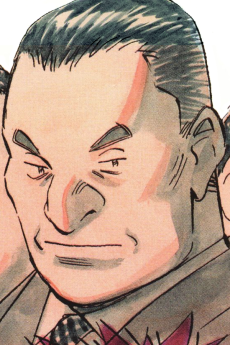
Masaaki Shimon
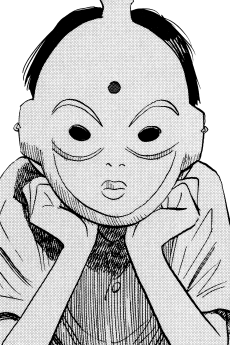
Katsumata Tadanobu
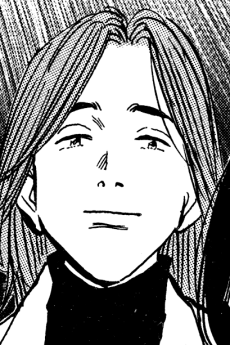
The Assassin
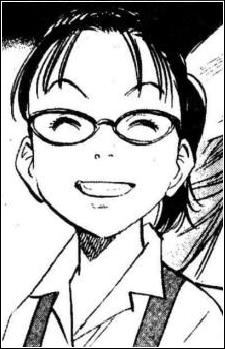
Sanae
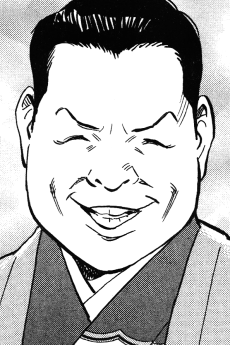
Haru Namio
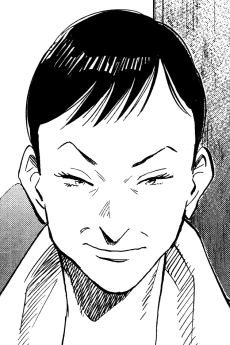
Mitsuyo Takasu
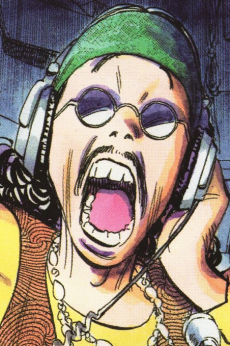
Yuuichi Imano
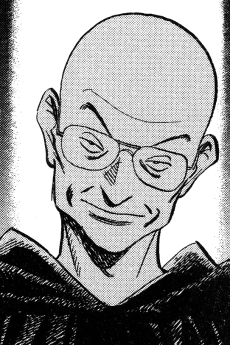
Masao Tamura
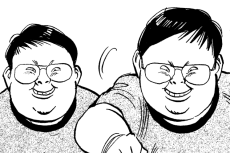
Yanbo and Mabo
CHAPTERS
RELATED TO 20 SEIKI SHOUNEN
REVIEWS

0215MADman
91/100The ending sucks but that shouldn't stop you from reading this great series from one of the best mangaka period.Continue on AniListIt took 8 chapters of Monster for me to absolutely fall in love with Naoki Urasawa’s works. So after reading Monster I just had to read 20th Century Boys and Pluto right after. Is it perfect? No. Let me address my issues with this manga.
The first problem is that it’s way too long. It’s about 100 more chapters than Monster and it just didn’t need to be.
Some of the plotlines feel like pointless meandering more than anything. One that always strikes me is the character of Koizumi. Now I like this character but she did not need to be in this manga at all and her story arc is just kinda thrown away.
20th Century Boys is different from Monster in the aspect that, while in Monster you know almost immediately who the villain is and the story is a psychological thriller, 20th Century Boys is a mystery. I’m not saying it’s a bad mystery, no it’s good, but after the main twist is revealed, one that makes me want to reread some of the earlier chapters to see how well they were setting it up, the plot just kind of lingers in a “well now what do we do” for a couple volumes.
And god, I just HATE the ending. It’s anticlimactic, feels rushed, wasn’t enjoyable anymore. The fact that the last two volumes are treated as a “sequel manga” pissed me the hell off.Those are my gripes. Literally every other aspect is either just as good or better than Monster.
Urasawa continues to improve his art style and it looks great. There are numerous characters and almost all of them are likable, my favorite easily being Otcho. Volumes 9 and 16 are pretty much perfect. I love how information is revealed and the pace said information is revealed at. And until the end, the story was damn good as well!
I loved reading this manga. That being said, I will recommend Monster over 20th Century Boys for multiple reasons. For one, I legitimately think it’s perfect. Comparing the two, the climax/ending of 20th Century Boys feels rushed and slightly anticlimactic, while Monster dedicates itself to both its climax and ending and is so much more satisfying. It also has an anime that from what I’ve heard is a 1:1 complete adaptation, which may make it easier to get into. Don’t wait for a 20th Century Boys anime, it’d be like 120 episodes if it were 1:1. Just watch the live-action movie trilogy (which I also want to see). I know it seems like I'm underselling the great aspects of this manga but I assure you that I enjoyed reading it.20th Century Boys is overly ambitious and couldn’t live up to what it was going for. But it’s still fantastic and worth reading.

Jaekoi
91/100It's time to take back the symbol.Continue on AniList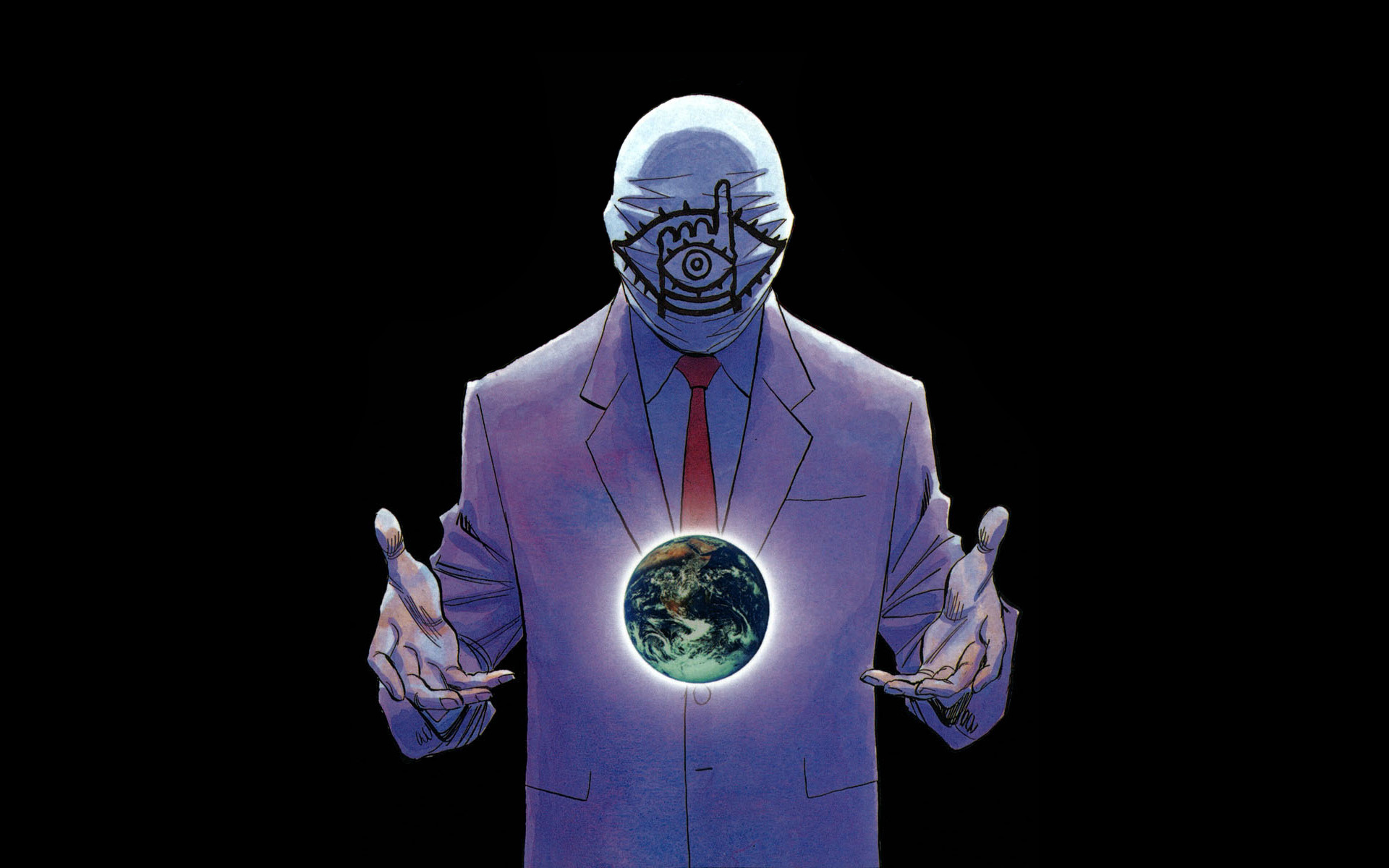
The progressive occurrences of the past always have some sort of relation to the modernized present. Respectively, today’s present is the cumulative source of the unexpected future. And with a perplexing hypothesis like this, Naoki Urasawa’s 20th Century Boys utilizes this conception to its fullest potential. With a deceptive narrative that consistently jumbles the events of the nostalgic past, the changed present, and the unknown future, the formula of prediction is no longer present in Urasawa’s writing direction. 20CB’s world is not only vast, but the timeline of its plot focus ranges as far as the Apollo moon landing of 1969 to modern-day 2018. Furthermore, Its narrative structure is formed by constant ricochets of the past and present through expansive, well-made characters who not only have clear association with one another, but also play a valuable role in advancing the narrative. However, even through momentary flashbacks of its historical scope consisting of sci-fi elements and the supernatural or the constant skipping of time frames, Naoki Urasawa never rejects nor abandons the complexion of 20CB’s developed, formative themes.
Additionally, 20CB takes many society-driven problems concerning political falsification, exploitation of government power, experimentation, biological weaponry, and the painful side-effects of bullying through repetitions of showcasing childhood memories, presented through its main cast.
Despite how chaotic and disorganized the foundation is, each chapter has elements of eerie, yet indulging overtones of well-flourished hooks that produces genuine buildups, substantial stakes involving Friend’s insanity, and the humanization of each character, which makes up for real, poignant themes. For the record, there are major references to cultural phenomena that only add to the experience involving NASA, pop-culture, and fictional characters like Wolverine, and the Transformers. Throw in the clever use of historical allegories and rock songs in the mix as well.
The themes surrounding World Domination are vividly present within the narrative, mainly through the Friend Democratic Party. On the surface level, it’s initially viewed as the authoritative source of motivation and inspiration in Friend’s actions and decisions. The contrasting qualities between Friend’s motivation and the apprised rebellion/faction are viewed as two sides where one plans to put an end to the other’s goals while the other forcefully desires to pursue the “ideal” world. The execution of this concept is established properly through creating nuanced stakes and giving authority to Friend’s existence. However, World Domination itself has always been viewed as an impossible pipedream in reality. It seemed childish, yet at the same time… seemed realistic and truthful.

Common events similar to building forts with childhood friends by creating a club can actually be the fuel to cataclysmic fallacies that may occur in the future; the seed that started everything. Insanely enough, 20CB is creatively immersive and fascinating since the significant, threatening weight of value cannot be anticipated/perceived in the exact moment of their occasion.
Kenji and his friends, as children, believed in subjective justice, the cliche-heroism that they’d save the world from evil. To make it more appealing, they created the “Book of Prophecy” to affix their idealism. Though eventually, their actions and decisions would cause the uprising of Friend’s Cult in the future. Resulting in the cycle of predetermined course of events in terms of taking responsibility for the sake of justice. Even the smallest, minor, and simple actions may cause an unprecedented future that one may not be able to overcome. It’s similar to moments like these that cement the chaos, madness, and insanity of 20CB. Even cliched idealism may be the entity that becomes the harsh reality.
Naoki Urasawa’s writing direction is unparalleled. The migration of switching between protagonists in each arc is done so fluidly it’s awe-inspiring. He doesn’t follow any rules in maintenance, especially in terms of status quo’s and circumstances. There’s a sense of variation and it allows the appeal and thematic focus of 20CB to have individuality and distinction from other pieces of fiction through the correct methods and encompassment.
20CB gives the limelight to almost every character included in the equation. At times, it may be Kenji, who embodies the protagonist's role with influence over the story, other times it could be as a supporting character transitioning into a being with vast significance over the cast, or the antagonistic faction, where in the heat of the moment, may seem like one may be considered as the protagonist. It’s essentially a completed orchestra, not inherently in terms of characters, but in generation, genre/categorization, and character age. The smallest events in the earlier volumes may actually be the seed to vital plot mechanics in order to push things forward. In other words, it’s all part of a prearranged formula set in stone that oozes a euphoric experience.

Derived from a character-driven narrative, 20CB channels many plot mechanics from what you’d read in a Stephen King Novel. It utilizes the events of the past containing innocent childhood promises and blossoming character relations in the present to initiate the birth of an apocalyptic future. It’s a thrilling, Sci-fi mystery heavily driven by the supernatural and the vast complexity of psychology. The smallest of actions turning into detrimental consequences. The question of who “Friend” is, an eerie entity who hides behind a mask. A rebellious, bandful group of outcasts reuniting to stand against the laws of society, a totalitarian regime, a menacing threat, and to take responsibility for their misgivings. This is the theme that defines its appeal.
The lingering, mysterious atmosphere of each chapter brings valuable suspense and progression to not only the plot, but most importantly, the characters themselves by how they function separately and how they cooperate successively. Urasawa is a mastermind when it comes to dissimilarity between ‘good’ and ‘evil’, and principally, the ground-breaking placement of its mystery and deception through establishing the motivations of Friend and justifying rebellion.
20th Century Boys is transfixed on pursuing a coming-of-age venture, and succeeds at it. Urasawa proves that he is self-aware on how to bestow extensive character development, gradually filtering its interweaving narrative, producing individuality and high-stake scenarios. The authoritative presence of Friend is a remarkable presentation of deception, temptation, and childish, yet truthful idealism that brings villain writing to newborn standards. The use of intricate pacing in each chapter was a spectacle to view through multiple character perspectives. 20th Century Boys is catastrophic, yet it's poignantly truthful with coruscating characters that hold genuine importance. The realism of its art emphasizes attentively well towards the general atmosphere. Indispensably, It’s a thrilling battlefield fought by different parties of humanized people through not only physical confrontation, but also deceptive mind-games, politics concerning the state of society, terrorism, and the sheer idealism of each individual. But for the most part, 20th Century Boys is an exploration of society itself and what it means to have a responsibility. Because at some point during the unexpected, someone must eventually take accountability for the past in order to move forward.
It's time to take back the symbol. 
dusk
95/100“Becoming adults means forgetting and moving on to the next thing.”Continue on AniListYes, that quote will actually be relevant eventually.
Before we start.... Please note that this review is divided into two segments. The first one will be spoiler-free and will basically be me recommending it to someone who is considering reading it. The second one will contain spoilers and will be a story analysis with all of my praises and criticisms of specific aspects of the story. The conclusion will remain spoiler-free. The first "Spoiler-Free" section will contain images from early volumes that don't give away anything important. Whilst it isn't that much of a spoiler, if you are trying to be cautious I'd recommend just skipping to the conclusion. Also this is my first review so sorry if it's not that great.
SPOILER-FREE Story: 9/10
The story follows Kenji, a convenience store owner whose childhood friend mysteriously commits suicide. When a symbol that Kenji and his friends made in 1969 resurfaces as part of a cult, which worships an enigmatic figure simply named "Friend", Kenji and his friends reunite, vowing to take back the symbol.

The cast of characters were just a joy to experience the story with. They develop in natural ways throughout the story and are all so memorable, with all of their personalities being believable. Over the course of the story, I grew attached to all of them and was satisfied with the various conclusions given to them. They are given adequate space to grow and for insights into their backstory to shine.
The mystery of "Friend" is executed almost perfectly throughout the entire story, with a new revelation being thrown in every few chapters. There are so many memorable scenes which have so much weight. Most of the story is brilliant, however after about 180 chapters I found that it had slightly decreased in quality. I felt like the dramatic moments had less weight, the story got much more convoluted and some personalities of the characters had been botched. I won't elaborate any further but once you reach this point I can guarantee you'll at least be able to notice the change. Despite this, the story was extremely captivating the whole way through and Naoki Urasawa consistently succeeds at almost everything. At some points I noticed my heart beating out of my chest, something which neither manga or anime has ever done to me before, something I thought was truly special.
Art: 10/10
I have to admit, when I first started reading this, I wasn't a fan of the art-style. In fact, I almost stopped reading because the art was so foreign to me. However, I stuck with it, and by the end of the story, I wanted more. Some panels stuck with me even after I finished. The gore, while infrequent, is very impactful when used. It transcends previously great scenes to greater heights.

Enjoyment: 9.5/10
It would have been a 10/10 if the last arc was as good as the others, however everything else about the story was so immaculately put-together and the mystery was so captivating that I had found that it had manipulated me into binge-reading it, even the last arc which I consider inferior. And that is far from a bad thing. The the first and second arcs are probably some of the best things I've ever read in any manga.
SPOILERS I'm writing this section of the review assuming you have read both 20th Century Boys and 21st Century Boys. If you haven't already, I would recommend reading 21st Century Boys as it completes the story for better or for worse. I didn't really take much issue with it and I thought most of it was an enjoyable read and a worthy addition to the story, however the more dramatic moments felt unnecessary and were not as good as 20th Century Boys'.
What I Liked (other than what was in the spoiler-free section)
This series executed most of its dramatic moments brilliantly. It's hard to describe in words, but Urasawa is truly a genius when it comes to building tension. Scenes such as the friendship party concert, the Pope's "assassination", and the Bloody New Year's Eve all His art was also great at setting the tone of the scene. The unnerving facial expressions from young Yamane and the shadows in places like the science room and the House on the Hanging Hill are examples where the art enhances the mood.
Image:
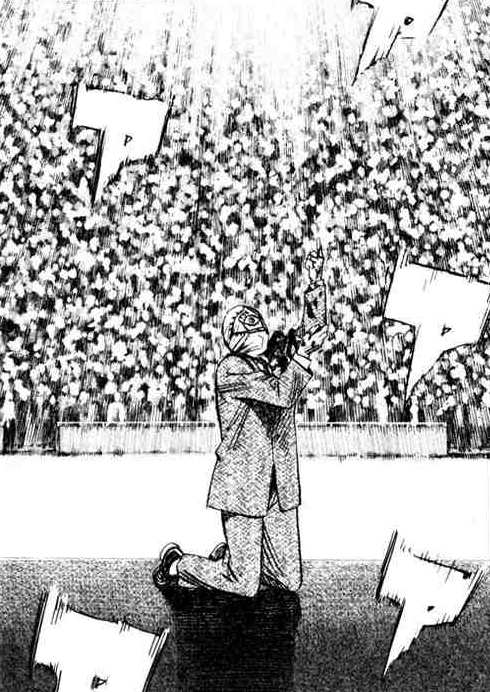
Even within the last arc, there were several moments which especially stuck with me, such as Otcho witnessing men having been deprived of their family lose their sanity and attempt to murder children to simply obtain a vaccine. This arc also spawned multiple versions of the masterpiece that is Bob Lennon. So even though the arc was a lot weaker compared to the first two, I'm still glad it existed.
Almost everything that took place in the virtual attraction was extremely captivating and the atmosphere given off by it was very refreshing.The whole mystery of "Friend" was very intricately crafted, and was the main compelling factor of the story. The reveal of "Friend's" identity being Fukubei was satisfying and occurred at the perfect moment once the reader had completely forgotten about him.
What I Didn't Like as Much
Image:

I would rather have Fukubei remain as "Friend" until the end of the story. The reveal that the new "Friend" was Katsumata seemed very bizarre to me. After finishing 21st Century Boys, I was left extremely confused about whether I saw Katsumata or Sadakiyo in certain scenes. That was probably due to me either being too stupid or the translation I read being inaccurate. However, if neither of those were the case I would recommend reading some wiki articles on both Sadakiyo and Katsumata.I also had an issue with the fact that some characters suffered from an extreme case of plot armor (Sadakiyo and Kenji mainly). While I'm ok with Kenji surviving and liked Sadakiyo's redemption, I wish that they had at least given an explanation about how Kenji survived. I mean, it was never explicitly confirmed that either of them died, and it was viable that Sadakiyo survived the burning car, but it's incredibly unbelievable that Kenji could have survived an explosion of that magnitude.
Some sequences, whilst enjoyable in the moment, didn't really make sense afterward and were never elaborated upon later in the story. Again, this could just be me being dumb, but I never really understood why the policeman with the mole was assassinated at the church in Kabuki. I don't think it was every explained, as the Friendship Party themselves admit that they are the antagonists, and I doubt that their hitman would be considered in the New Book of Prophecy as a "Savior of Justice".I know it seems like I wrote a lot of negative stuff here but that pretty much only consisted of minor nitpicks I had with the story. In the end, the triumphs far outweighed my grievances.
My Thoughts on the Ending
I'll be using spoiler tags here for the sake of everyone who scrolled to the bottom to read the conclusion. I personally didn't have much of an issue with how things wrapped up between all of the characters. I thought Kenji putting his cap on Kanna was a really nice touch, and the fact that Kenji was reunited with (most) of his childhood friends was a suitable direction for the ending to go in. However, I thought that the final confrontation with Friend was slightly underwhelming, considering the immaculate buildup. I certainly liked the ending a lot more than about 40% of the readers did, I just thought that the ending could have been better.
Briefly Regarding 21st Century Boys
As I said previously, this completes the story, for better or for worse. Kenji's journey into the virtual attraction would have been enough to conclude the story in a satisfying way, and to clear up the cliffhanger-esque ending. While it did succeed at that, it added an unnecessary plot point of the anti-proton bomb. It was still enjoyable, don't get me wrong, but I feel it weakens the original conclusion. I appreciated Manjoume's sendoff here and it was probably my favourite part aside from Kenji interacting with his younger self. Kanna finally meeting her mother was also a great addition that should have happened in the original manga.
Conclusion (Spoiler-free) 
While I don't think that 20th Century Boys is objectively the best manga I've read, I would say that it'll probably remain one of my favourites (edit over 2 months later: Monster is now my favourite). All of the main characters are memorable and the mystery is perfectly crafted with twists and turns around every corner. It succeeds at being unnerving, endearing, thrilling, and impactful. The art is refreshing and perfectly suits the tone of the story, with facial expressions really shining. They belonged to a great ensemble of characters who get suitable development and help propel a very interesting story towards its conclusion. Overall, I would definitely recommend reading it, and, despite the flaws in the final act, it's worth finishing. Also don't forget to read 21st Century Boys too. It will answer some questions you will inevitably have with the ending.
Again, sorry if the review wasn't well-structured, especially in the spoiler section, but I hope it can be forgiven as this is my first review.
SIMILAR MANGAS YOU MAY LIKE
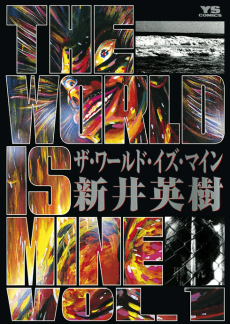 MANGA AdventureThe World Is Mine
MANGA AdventureThe World Is Mine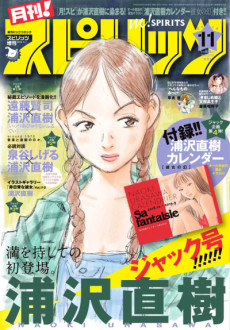 ONE SHOT Slice of LifeIt's a Beautiful Day
ONE SHOT Slice of LifeIt's a Beautiful Day
SCORE
- (4.4/5)
MORE INFO
Ended inApril 24, 2006
Trending Level 6
Favorited by 6,945 Users

